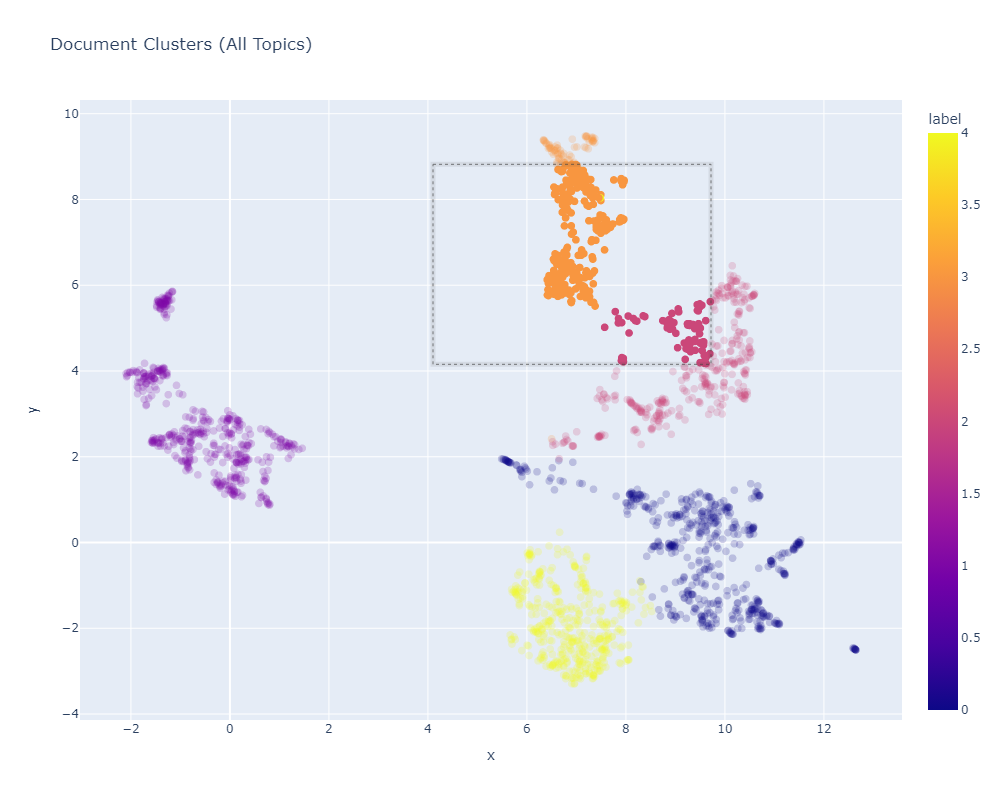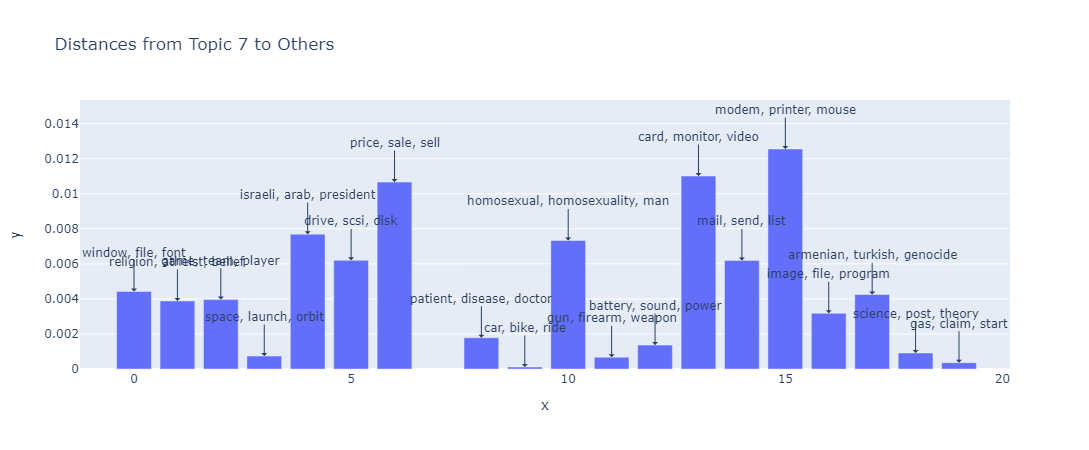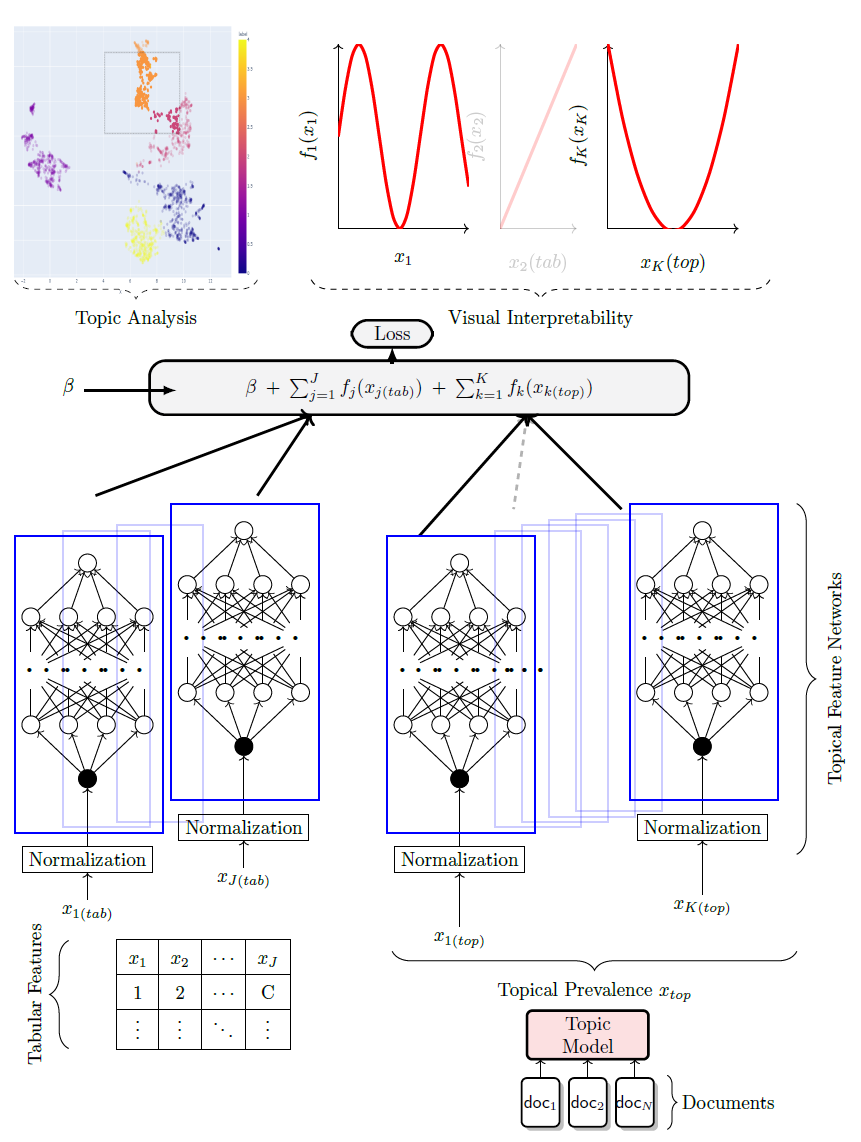We present STREAM, a Simplified Topic Retrieval, Exploration, and Analysis Module for user-friendly topic modelling and especially subsequent interactive topic visualization and analysis. For better topic analysis, we implement multiple intruder-word based topic evaluation metrics. Additionally, we publicize multiple new datasets that can extend the so far very limited number of publicly available benchmark datasets in topic modeling. We integrate downstream interpretable analysis modules to enable users to easily analyse the created topics in downstream tasks together with additional tabular information.
The core of the STREAM package is built on top of the OCTIS framework and allows seamless integration of all of OCTIS' multitude of models, datasets, evaluation metrics and hyperparameter optimization techniques. See the Octis Github repository for an overview.
Since most of STREAMs models are centered around Document embeddings, STREAM comes along with a set of pre-embedded datasets. Additionally, once a user fits a model that leverages document embeddings, the embeddings are saved and automatically loaded the next time the user wants to fit any model with the same set of embeddings.
Since we are currently under review and wish to maintain anonymity, STREAM is not yet available on PyPI. To install STREAM, you can install it directly from the GitHub repository using the following command:
pip install git+https://github.com/AnFreTh/STREAM.gitMake additionally sure to download the necessary nltk ressources, e.g. via:
import nltk
nltk.download('averaged_perceptron_tagger')| Name | Implementation |
|---|---|
| WordCluTM | Tired of topic models? |
| CEDC | Topics in the Haystack |
| DCTE | Human in the Loop |
| KMeansTM | Simple Kmeans followed by c-tfidf |
| SomTM | Self organizing map followed by c-tfidf |
| CBC | Coherence based document clustering |
| Name | Description |
|---|---|
| ISIM | Average cosine similarity of top words of a topic to an intruder word. |
| INT | For a given topic and a given intruder word, Intruder Accuracy is the fraction of top words to which the intruder has the least similar embedding among all top words. |
| ISH | calculates the shift in the centroid of a topic when an intruder word is replaced. |
| Expressivity | Cosine Distance of topics to meaningless (stopword) embedding centroid |
| Embedding Topic Diversity | Topic diversity in the embedding space |
| Embedding Coherence | Cosine similarity between the centroid of the embeddings of the stopwords and the centroid of the topic. |
| NPMI | Classical NPMi coherence computed on the scource corpus. |
| Name | # Docs | # Words | # Features | Description |
|---|---|---|---|---|
| Spotify_most_popular | 4,538 | 53,181 | 14 | Spotify dataset comprised of popular song lyrics and various tabular features. |
| Spotify_least_popular | 4,374 | 111,738 | 14 | Spotify dataset comprised of less popular song lyrics and various tabular features. |
| Spotify | 4,185 | 80,619 | 14 | General Spotify dataset with song lyrics and various tabular features. |
| Reddit_GME | 21,549 | 21,309 | 6 | Reddit dataset filtered for "Gamestop" (GME) from the Subreddit "r/wallstreetbets". |
| Stocktwits_GME | 11,114 | 19,383 | 3 | Stocktwits dataset filtered for "Gamestop" (GME), covering the GME short squeeze of 2021. |
| Stocktwits_GME_large | 136,138 | 80,435 | 3 | Larger Stocktwits dataset filtered for "Gamestop" (GME), covering the GME short squeeze of 2021. |
| Reuters | 8,929 | 24,803 | - | Preprocessed Reuters dataset well suited for comparing topic model outputs. |
| Poliblogs | 13,246 | 70,726 | 4 | Preprocessed Poliblogs dataset well suited for comparing topic model outputs. |
To use these models, follow the steps below:
-
Import the necessary modules:
from stream.models import CEDC, KmeansTM, DCTE from stream.data_utils import TMDataset
-
Get your dataset and data directory:
dataset = TMDataset() dataset.fetch_dataset("20NewsGroup")
-
Choose the model you want to use and train it:
model = CEDC(num_topics=20) output = model.train_model(dataset)
-
Evaluate the model using either Octis evaluation metrics or newly defined ones such as INT or ISIM:
from stream.metrics import ISIM, INT metric = ISIM(dataset) metric.score(output)
-
Score per topic
metric.score_per_topic(output)
-
Visualize the results:
from stream.visuals import visualize_topic_model, visualize_topics visualize_topic_model( model, reduce_first=True, port=8051, )
The general formulation of a Neural Additive Model (NAM) can be summarized by the equation:
where
Let's consider
For preserving interpretability, the downstream model is defined as:
In this setup, visualizing the shape function k reveals the impact of a topic on the target variable y. For example, in the context of the Spotify dataset, this could illustrate how a topic influences a song's popularity.
Fitting a downstream model with a pre-trained topic model is straightforward using the PyTorch Trainer class. Subsequently, visualizing all shape functions can be done similarly to the approach described by Agarwal et al. (2021).
from pytorch_lightning import Trainer
from stream.NAM import DownstreamModel
# Instantiate the DownstreamModel
downstream_model = DownstreamModel(
trained_topic_model=topic_model,
target_column='popularity', # Target variable
task='regression', # or 'classification'
dataset=dataset,
batch_size=128,
lr=0.0005
)
# Use PyTorch Lightning's Trainer to train and validate the model
trainer = Trainer(max_epochs=10)
trainer.fit(downstream_model)
# Plotting
from stream.visuals import plot_downstream_model
plot_downstream_model(downstream_model)

